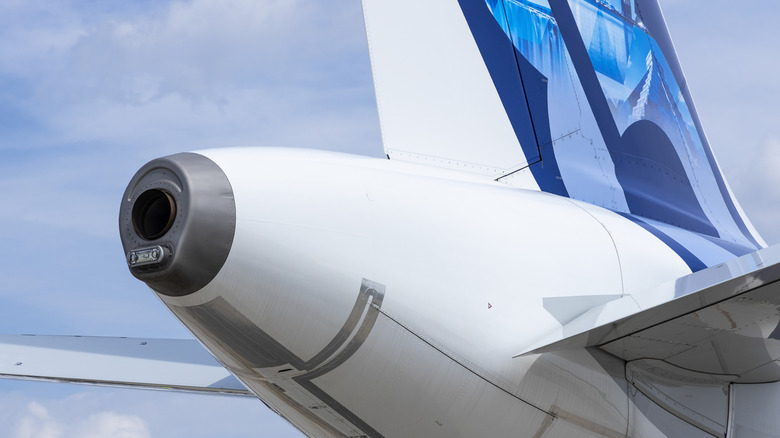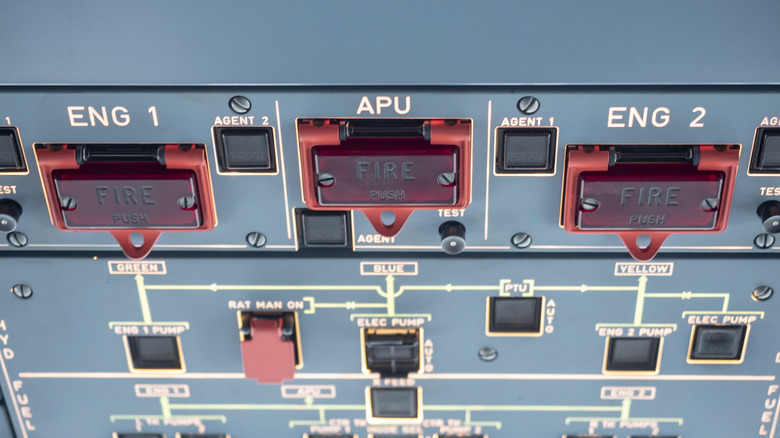What Are APUs And Why Do Some Planes Use Them?
If you've ever noticed a little exhaust hole at the rear of a large passenger plane and wondered what it was, that's the location of the plane's APU, or auxiliary power unit. The APU is found on multiple types of aircraft, including commercial airliners, small private jets, and some military aircraft serving as an extra power source. The B-29, one of Boeing's biggest achievements, used one of the earliest versions of an APU that looked similar to a motorcycle engine. The Boeing 727 passenger jet was the first plane by the manufacturer to have an APU installed. Pilots will often use the APU to start one of the plane's main engines. If an aircraft has one, it's typically found in the tail cone, an engine nacelle, or in the wheel well.
The APU might resemble a jet engine and producing enough energy on its own to power a variety of electronics within the aircraft, including onboard lighting, galley electronics, and cockpit avionics, but it doesn't provide any sort of propulsion like the main engines. Rather than condensing air enough to propel a plane forward like a turbojet or turbofan engine, the APU vents its exhaust overboard. APUs are helpful, but their biggest drawback is the sound they emit.
They can be loud but are considerably louder when the bleed air is used to heat or cool the cabin on the ground. There are even airports that prohibit APU use during nighttime hours to avoid disrupting local residents. Manufacturers typically place the APU in a sound-reducing compartment.
Why airplanes have APUs
The primary role for the Auxiliary power unit is to kickstart an aircraft's main engine. The most powerful jet engines you can find on commercial planes require a high rotational speed to become self-sustaining for flights, which the APU can provide. Additionally, they're ideal for passenger planes and their fuel economy. While a commercial plane sits at gate, waiting for passengers to board or as soon as it lands and taxis to a gate, the pilot can switch on the APU to conserve fuel . Pilots typically shut off the APU just before they takeoff and turn it back on after they land and are off the runway.
Pilots try to use the APU strictly during ground operations, but there are instances when pilots have used it when an engine or two have gone out during a flight. With his quick thinking, Captain Sullenberger of US Airways Flight 1549 – an airplane that sustained damage to its engines from a bird strike– switched on his plane's APU when both engines died, giving him access to electronics and improving his flight's chances.
Additionally, using the APU minimizes wear and tear on the primary engines. This can extend their operational life but also saves a little in maintenance costs.

